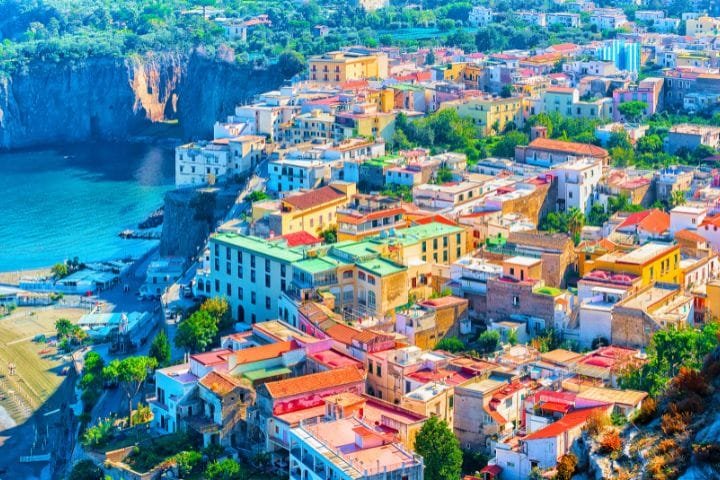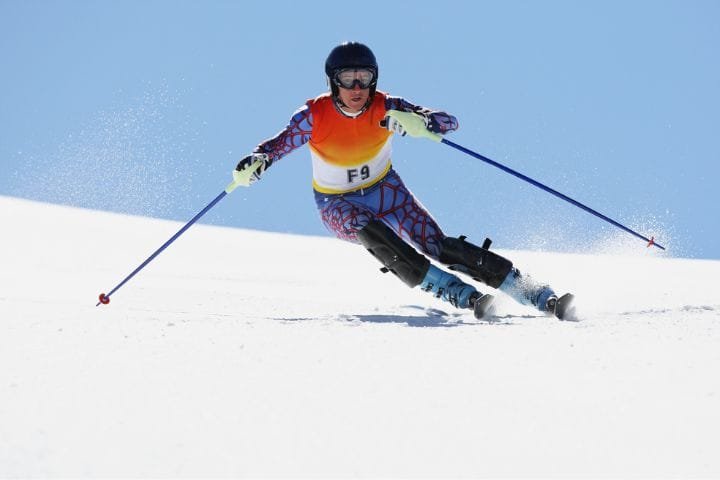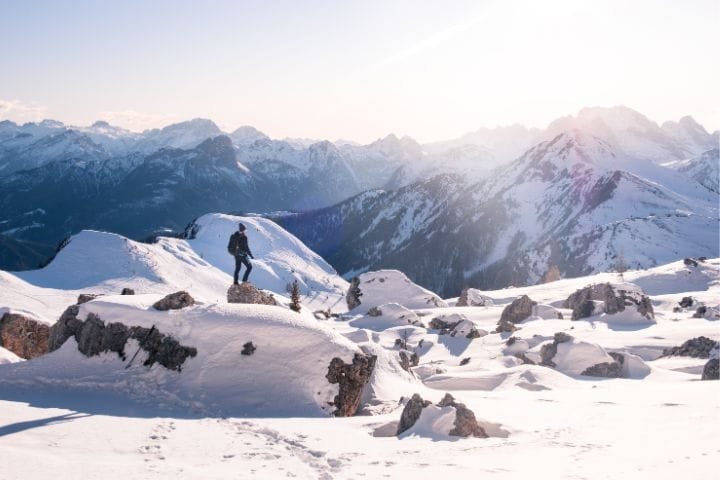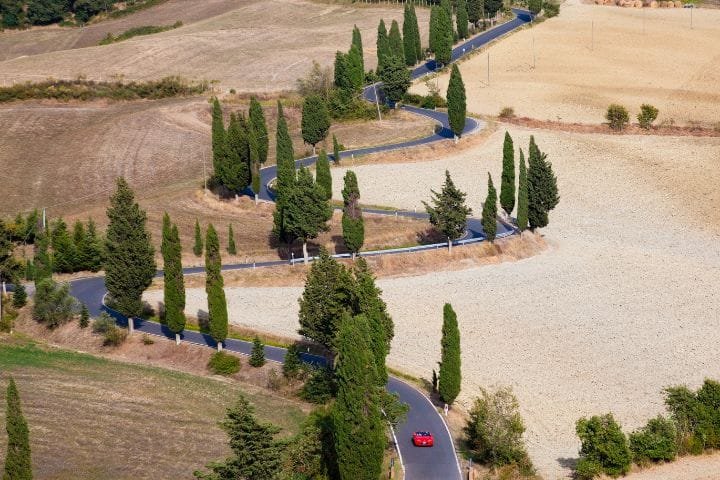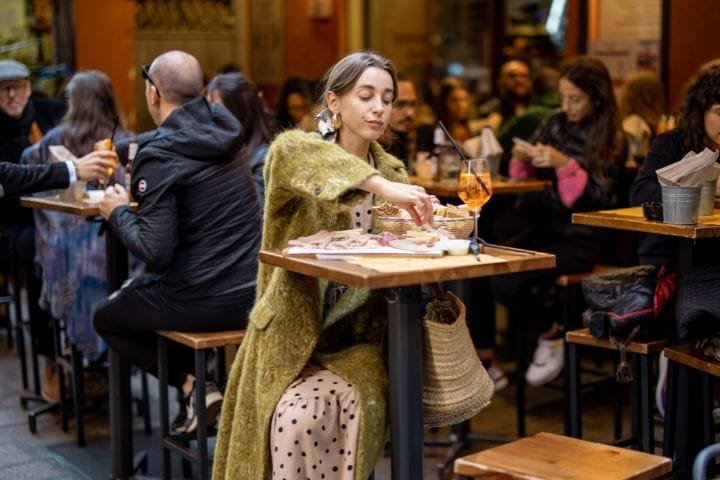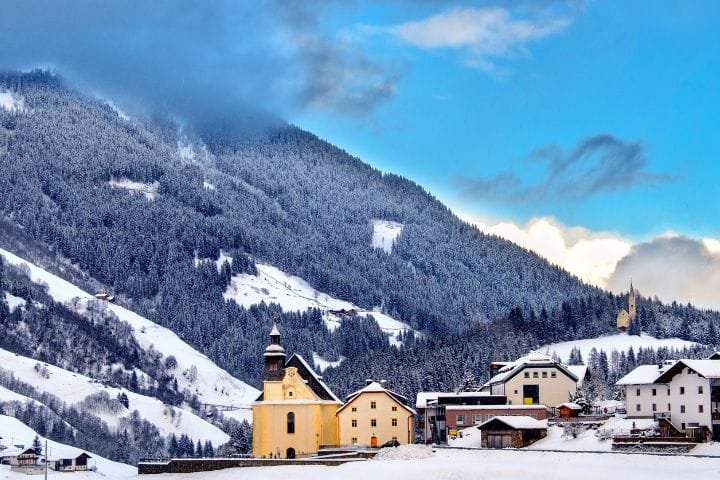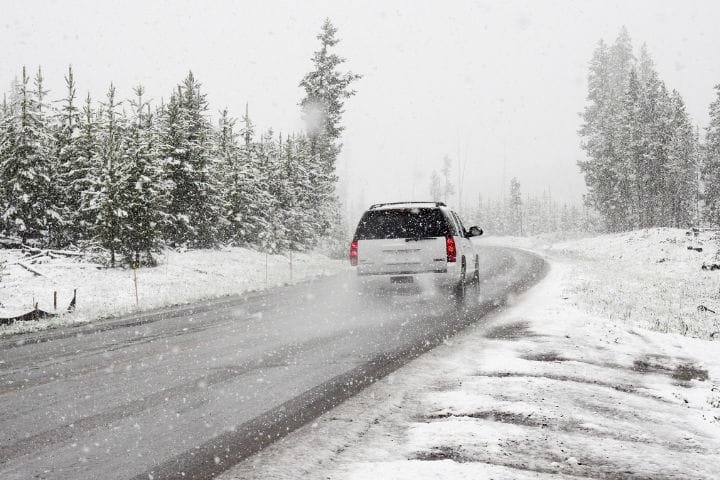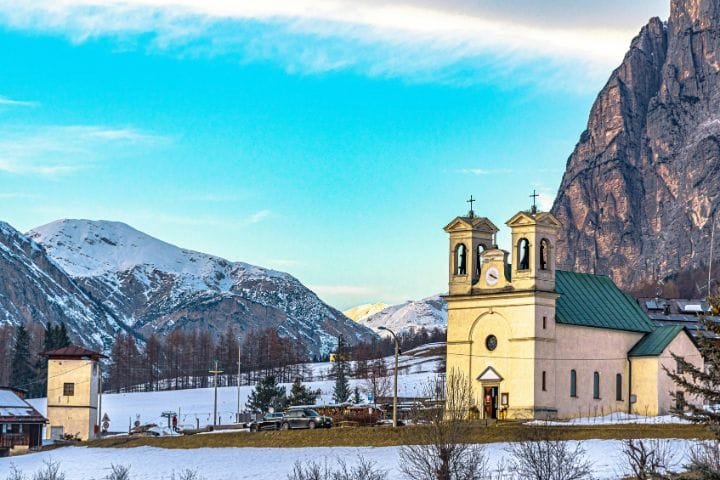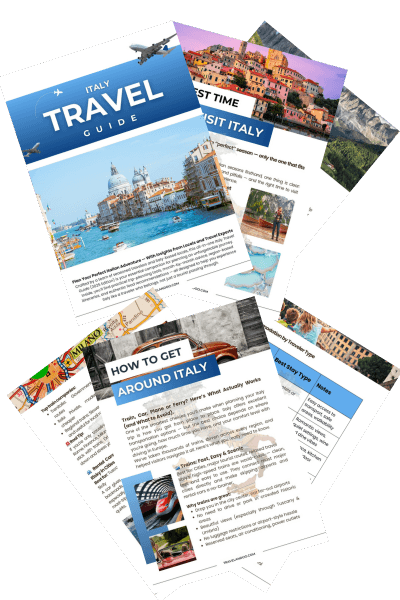Discover the Best Scenic Drives in Northern Italy: From the Dolomites to Lake Como

by Asia A. | Last Updated December 19, 2025
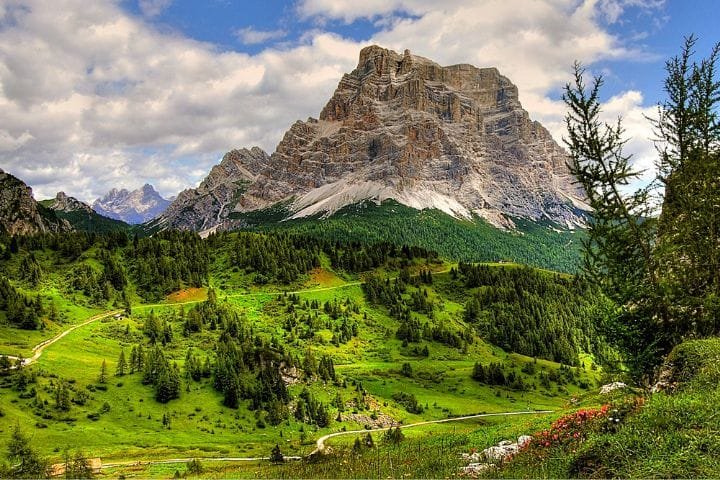
Ready to explore some of Europe’s most spectacular mountain and lake scenery behind the wheel? As someone born and raised in beautiful Northern Italy, I can tell you that our region offers some of the most spectacular and diverse scenic drives in all of Europe.
Growing up here, these incredible landscapes were my playground – from weekend family trips to the Dolomites, where serpentine mountain passes climb to dizzying heights, to romantic drives around Lake Como, where elegant villas reflect in crystal-clear waters.
From the rolling vineyard hills of Piedmont to the Mediterranean atmosphere of the Italian Riviera, Northern Italy delivers driving experiences that combine natural splendor with rich cultural heritage in ways that few destinations can match.
Did you know that Northern Italy features over 20 major mountain passes above 2,000 meters elevation, plus three of Europe’s most beautiful lake regions, all connected by scenic routes that have inspired travelers for centuries?
Whether you’re seeking the adrenaline rush of conquering famous Alpine passes like the Stelvio or Giau, the romantic elegance of lakeside drives around Como and Maggiore, the cultural richness of wine country routes through Barolo and Barbaresco, or the coastal drama of Ligurian cliff-top roads, Northern Italy provides driving adventures that satisfy every type of traveler.
Let’s explore the best scenic drives in Northern Italy that showcase why Italy remains one of the world’s premier destinations for scenic driving adventures!
🧭 How Northern Italy Fits Into Italy’s Scenic Drives
Northern Italy offers the widest variety of scenery in the country, from alpine passes to lakes and elegant coastlines.
- Compare mountains, lakes, countryside, and coast → Best scenic drives in Italy
- Plan a multi-region route without long driving days → How to plan a perfect Italy road trip
Dolomites Mountain Passes: Alpine Drama at Its Peak
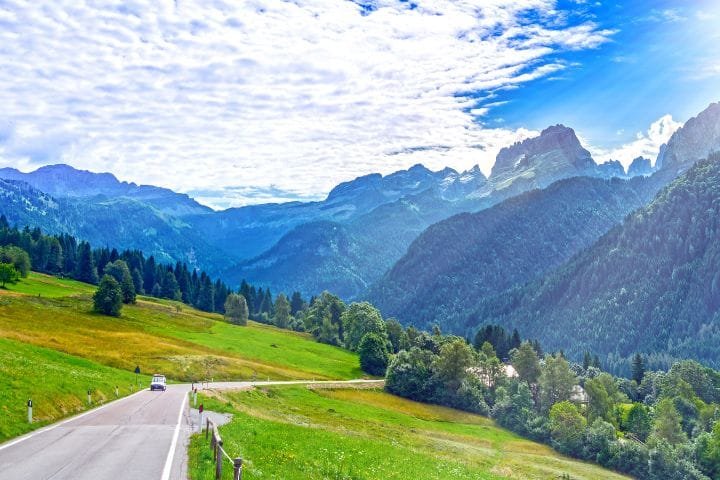
Stelvio Pass represents the absolute pinnacle of European mountain driving, and as a local who’s conquered it dozens of times, I can tell you it never gets old. This legendary pass climbs to 2,757 meters with 48 hairpin turns that will test both your driving skills and your nerves. The eastern approach from Bormio is more gradual, while the northern descent into Switzerland is heart-stoppingly steep.
I always tell visitors to start early – before 8 AM if possible – to avoid the tour buses and afternoon thunderstorms that are common in summer. The views from the top are absolutely spectacular, but take time to appreciate them at designated stopping areas, not while navigating those incredible switchbacks.
Sella Ronda circuit is my favorite introduction to the Dolomites driving for visitors who want spectacular scenery without the extreme challenge of the Stelvio. This classic loop connects four major passes (Sella, Pordoi, Campolongo, and Gardena) and can be completed in half a day, though I recommend taking a full day to truly appreciate the experience.
Each pass offers different character – Sella provides dramatic rocky towers, Pordoi offers access to cable cars and high-altitude hiking, while Gardena showcases the green valleys of South Tyrol. The circuit works perfectly for testing your mountain driving skills on varied terrain with excellent safety infrastructure.
Giau Pass between Cortina and Colle Santa Lucia provides some of the most photogenic Dolomites scenery. At 2,236 meters, it offers incredible views of Pelmo and Civetta peaks that look like Gothic cathedrals carved from stone. The road is narrow with steep sections, but the payoff is worth every moment of fear.
Essential Dolomites driving tips from a local:
- Monitor weather constantly – mountain conditions change rapidly
- Carry winter equipment (chains) from November through April, regardless of conditions
- Use lower gears for both climbs and descents to maintain engine braking
- Never attempt high passes during storms, fog, or when visibility drops below 50 meters
- Book accommodations in advance during peak season (July-September)
🏔️ Alpine Scenic Drives in Northern Italy
The Dolomites are the crown jewel of alpine driving, but they pair well with nearby regions.
- High mountain passes and panoramic viewpoints → Dolomites driving guide
- Short lake-to-mountain transition → Milan to Lake Como scenic drive
- Alpine valleys with quieter roads → Hidden scenic routes in Piedmont
Italian Lakes Region: Romantic Waterside Routes
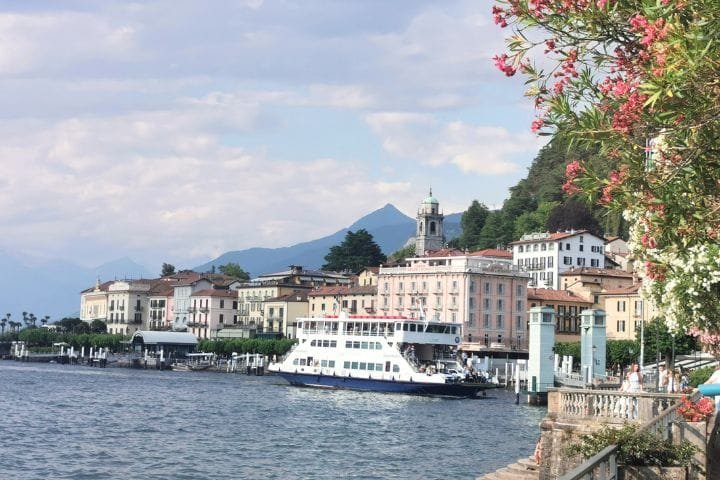
Lake Como scenic routes showcase why our lake has attracted royalty, celebrities, and romantics for centuries. The drive from Villa del Balbianello to Bellagio follows the western shore through some of the most elegant landscapes in Italy, passing historic villas, manicured gardens, and charming lakeside villages.
I grew up swimming in these waters and know every hidden viewpoint along the shore. The secret is timing your drive for early morning or late afternoon when the light transforms the lake into liquid gold and the villa gardens glow with Mediterranean colors.
Lake Maggiore cross-border experiences offer unique opportunities to drive from Italy into Switzerland within the same scenic route. The drive from Stresa to Locarno showcases both countries’ approaches to lake development – Italian elegance meets Swiss precision in one unforgettable journey.
The Borromean Islands, accessible by ferry from multiple points along the shore, provide magical breaks to your driving adventure. I recommend parking in Stresa and taking the boats to explore Isola Bella’s baroque palace and Isola Madre’s botanical paradise.
Lake Garda’s dramatic western shore features some of the most spectacular cliff-top driving in Italy. The Gardesana Occidentale road, carved into sheer rock faces, offers constant lake views and access to charming towns like Limone and Malcesine. This route requires confident driving skills due to narrow sections and dramatic drops.
Lake Orta’s intimate experiences provide my personal favorite lake driving. This smaller, less-touristed lake offers incredibly romantic scenery with the medieval island of San Giulio reflected in calm waters surrounded by the Alps. The circuit around Orta takes just 2 hours but rewards slow exploration with authentic Italian lake culture.
Lakes region practical insights:
- Spring (April-May) and fall (September-October) offer ideal weather with fewer crowds
- Summer brings peak tourism and parking challenges in popular towns
- Many lake roads are narrow with limited passing opportunities
- Ferry connections provide scenic alternatives to driving around entire lakes
- Book lake hotel accommodations well in advance for properties with parking
🏞️ Lake-Focused Scenic Drives
Northern Italy’s lakes offer relaxed driving with dramatic backdrops.
- Easy lakeside escape from Milan → Milan to Lake Como scenic drive
- Lakes, mountains, and alpine villages combined → Best scenic drives in Northern Italy
- Extend lake routes into alpine scenery → Dolomites driving guide
Piedmont Wine Country: Rolling Hills and Noble Wines
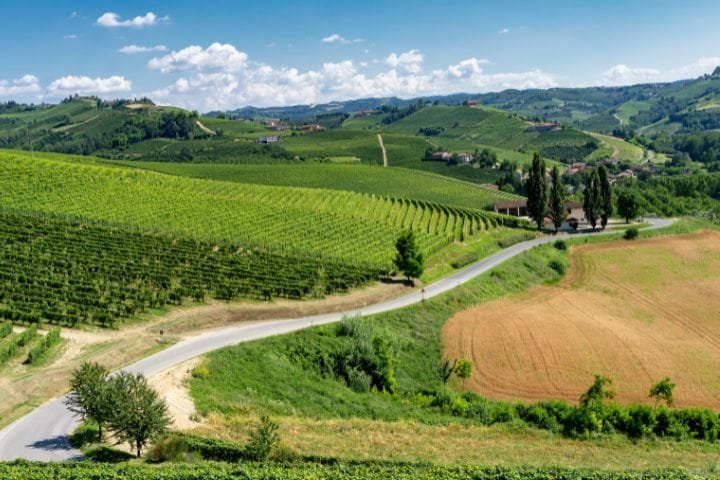
Barolo and Barbaresco vineyard routes take you through landscapes that produce Italy’s most prestigious wines. These rolling hills covered in precisely manicured vineyards create compositions that change dramatically with seasons – spring’s fresh green growth, summer’s lush vegetation, autumn’s golden and red harvest colors, and winter’s stark beauty that reveals the underlying landscape structure.
Alba to Asti truffle country drives combine wine culture with gastronomic adventures, especially during white truffle season (October-December). The drive through Langhe hills showcases both vineyard landscapes and the oak forests where the world’s most expensive truffles grow wild.
I remember childhood weekends when my family would drive these routes during harvest season, stopping at small producers who welcomed visitors like extended family. These experiences taught me that Piedmont’s wine country isn’t just about tasting – it’s about understanding the connection between landscape, tradition, and quality.
Langhe hills’ UNESCO recognition acknowledges landscapes that represent centuries of agricultural artistry. The geometric patterns of vineyard rows, scattered farmhouses, and medieval villages create compositions that satisfy both aesthetic and cultural appreciation.
Monferrato exploration offers gentler landscapes and often better value wine experiences compared to the more famous Barolo areas. This region produces excellent wines, including Barbera and Dolcetto, while maintaining an authentic agricultural culture.
Piedmont wine country essentials:
- September-October harvest season offers incredible colors and cultural activities
- Many wineries require appointments, especially prestigious Barolo producers
- Local restaurants serve traditional cuisine perfectly paired with regional wines
- Truffle season (October-December) brings festivals and specialized menus
- Agriturismo accommodations provide authentic wine country experiences
🍇 Wine Country & Countryside Scenic Routes
Piedmont offers quieter roads and refined countryside landscapes.
- Underrated backroads and wine villages → Hidden scenic routes in Piedmont
- Countryside alternative to coastal routes → Tuscany scenic drives
- Broader countryside inspiration → Best scenic drives in Italy
Veneto and Friuli: From Prosecco Hills to Alpine Valleys
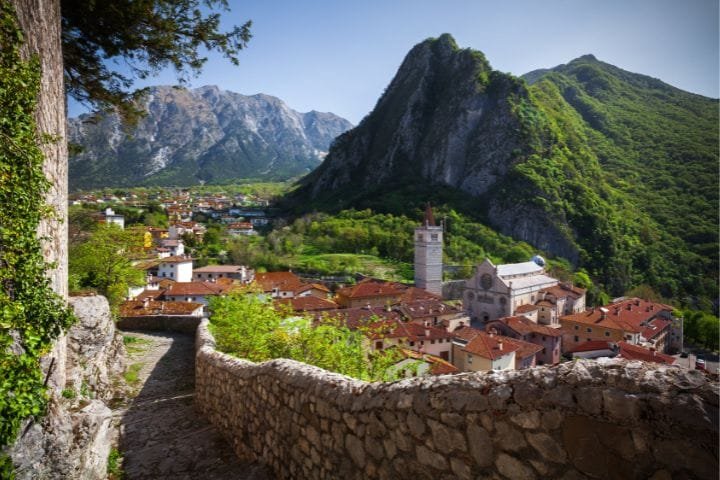
Prosecco Road through Valdobbiadene winds through steep hillsides covered in vineyards that produce Italy’s most famous sparkling wine. These dramatic landscapes, recently granted UNESCO World Heritage status, showcase how human cultivation can enhance rather than diminish natural beauty.
I love bringing visitors here during harvest season when the hills come alive with workers picking grapes for the next vintage. The combination of spectacular scenery and celebratory atmosphere creates perfect Italian countryside experiences.
Soave wine region and medieval castle routes provide cultural richness beyond just wine tasting. The perfectly preserved medieval castle of Soave overlooks vineyards that have produced white wines for over a thousand years, while the surrounding countryside offers classic Venetian villa architecture.
Friuli wine country near the Slovenian border offers some of Italy’s most sophisticated white wines in landscapes that feel more Central European than typically Italian. The region’s unique position creates cultural fusion that’s reflected in both cuisine and wine styles.
Venetian Villas and Palladian architecture throughout Veneto create scenic drives that combine landscape beauty with architectural masterpieces. Many villas are accessible by car and offer guided tours that explain the connection between agricultural wealth and artistic patronage.
Veneto and Friuli highlights:
- Prosecco hills offer spectacular views and excellent sparkling wine tastings
- Soave provides medieval architecture combined with white wine traditions
- Friuli showcases sophisticated wines and Central European cultural influences
- Venetian villas demonstrate Renaissance architecture in countryside settings
- Cultural diversity reflects the region’s position between Italian and Germanic influences
Plan Your Trip with Our Favorite Booking Tools
Liguria: Italian Riviera Coastal Splendor
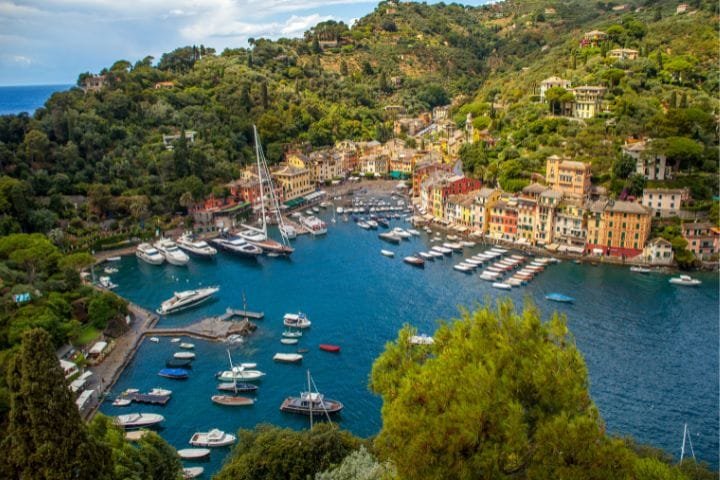
Portofino to Cinque Terre coastal drive represents the classic Italian Riviera experience, though it requires understanding that you can’t actually drive between the five famous villages. The strategy is to use strategic parking locations and combine driving with trains and boats for complete coastal exploration.
Growing up on the Ligurian coast, I learned that our region’s beauty comes from the dramatic contrast between mountains and sea. These landscapes force roads to follow challenging routes carved into cliffs, creating driving experiences that are simultaneously spectacular and demanding.
Riviera di Ponente, toward the French border, offers gentler coastal driving with beautiful beach towns, flower cultivation terraces, and mountain backdrops. This western section provides easier driving than the more famous eastern coast while delivering equally spectacular scenery.
Mountain routes with Mediterranean views provide alternatives to coastal traffic while offering different perspectives of our coastline. The inland roads through olive groves and traditional villages showcase authentic Ligurian culture away from tourist concentrations.
Historic coastal towns and fishing villages maintain authentic maritime culture despite increasing tourism. Places like Camogli and Vernazza preserve traditional fishing activities alongside tourism, creating genuine cultural experiences.
Ligurian coast driving considerations:
- Narrow roads carved into cliffs require confident mountain driving skills
- Parking is extremely limited in popular coastal towns
- Summer traffic can be overwhelming – early morning and evening drives work best
- Train connections provide excellent alternatives to driving between coastal towns
- Mountain routes offer cooler temperatures and different cultural experiences
🌊 Northern Italy’s Coastal Scenic Drives
Liguria adds elegant coastal scenery to Northern Italy road trips.
- Classic Riviera towns and cliffside roads → Italian Riviera scenic drive
- Coastal scenery with limited village driving → Cinque Terre scenic drive
- Coast-to-countryside transitions → Tuscany scenic drives
Alpine Valleys: Hidden Gems and Cultural Diversity

Aosta Valley approaches to Mont Blanc and the Matterhorn showcase the most dramatic Alpine scenery accessible by car in Italy. This autonomous region maintains distinct French cultural influences while providing access to some of Europe’s highest peaks.
The valley’s strategic position as a transit route between Italy, France, and Switzerland creates a unique cultural fusion reflected in architecture, cuisine, and local traditions. I always recommend allowing extra time for cultural discoveries beyond just scenic driving.
Valtellina terraced vineyards near the Swiss border create some of the most spectacular agricultural landscapes in the Alps. These steep terraces, built over centuries, produce unique wines while showcasing human determination to cultivate impossible terrain.
Val Gardena, South Tyrolean culture, provides authentic Germanic Alpine experiences within Italian borders. The valley’s Ladin-speaking population maintains distinct traditions while offering world-class skiing and hiking in summer months.
Trentino valleys feature apple orchards, mountain lakes, and traditional Alpine villages that showcase how mountain communities adapt to dramatic terrain. Each valley offers distinct character and cultural experiences.
Alpine valley discoveries:
- Aosta Valley combines French culture with dramatic Alpine scenery
- Valtellina showcases impossible terraced viticulture and Swiss border access
- South Tyrol offers Germanic culture and some of Italy’s best mountain recreation
- Trentino provides traditional Alpine agriculture and pristine mountain lakes
- Each valley maintains a distinct cultural identity and local traditions
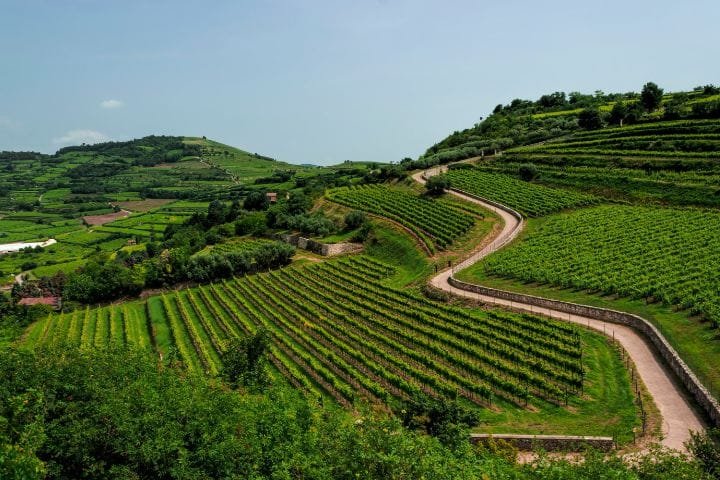
Practical Planning for Northern Italy Road Trips
Seasonal considerations dramatically affect Northern Italian driving experiences. Summer offers the longest daylight hours and the warmest weather, but brings peak tourism and traffic. Spring and fall provide ideal conditions with comfortable temperatures and manageable crowds.
Winter transforms mountain areas into skiing destinations while coastal regions offer intimate experiences with minimal tourism. However, high mountain passes close from November through May, requiring alternative routing.
Multi-region itinerary suggestions should account for realistic driving distances and mountain weather. A classic two-week circuit might include the Dolomites (3 days), Veneto wine country (2 days), the Italian Lakes (3 days), Piedmont (3 days), and Liguria (3 days) with flexibility for weather delays.
Weather monitoring becomes crucial for mountain driving. I use multiple sources, including MeteoTrentino for Alpine conditions, local tourist offices for current road status, and real-time webcams for visual confirmation of conditions.
Mountain driving safety requires understanding that conditions can change rapidly from sunshine to snow, even during summer months. Always carry emergency supplies, monitor weather forecasts, and have backup route plans for high-altitude passes.
Essential planning strategies:
- Book mountain accommodations well in advance for peak season
- Carry emergency supplies, including warm clothing and food for mountain driving
- Download offline maps for areas with limited cell coverage
- Understand that GPS routing may not account for seasonal road closures
- Plan flexible itineraries that allow for weather-related route changes
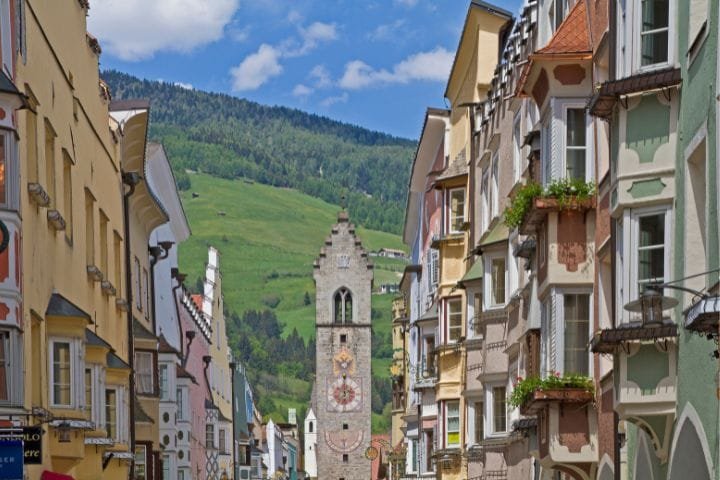
Photography and Cultural Experiences
Golden hour timing varies significantly with elevation and season throughout Northern Italy. Mountain areas experience earlier sunsets due to surrounding peaks, while lake regions offer extended golden hour periods reflected in calm waters.
I’ve spent decades perfecting photography timing throughout our region. The key is understanding how local geography affects light patterns – valleys may be in shadow while peaks remain illuminated, creating dramatic contrast opportunities.
Traditional festivals and seasonal celebrations provide authentic cultural experiences that enhance scenic driving adventures. Each region maintains distinct traditions reflecting local history, agricultural cycles, and cultural heritage.
Local cuisine specialties vary dramatically between regions – Piedmont’s truffle and wine culture differ completely from South Tyrolean speck and strudel, while Ligurian focaccia and pesto represent Mediterranean influences.
Artisan workshops and cultural heritage sites throughout Northern Italy preserve traditional crafts and cultural practices. Many are accessible by scenic routes and provide insights into regional culture beyond just landscape appreciation.
Cultural enhancement opportunities:
- Photography workshops in the dramatic Dolomites landscapes
- Wine harvest participation in Piedmont during September-October
- Traditional craft demonstrations in Alpine valleys
- Seasonal festivals celebrating local products and traditions
- Cooking classes featuring regional specialties and local ingredients
Embracing Northern Italy’s Incredible Diversity
After a lifetime of exploring these incredible landscapes, I can tell you that Northern Italy’s scenic drives offer something far more valuable than just beautiful views – they provide connections to diverse cultures, traditions, and ways of life that have developed over centuries in response to dramatic geographic variety.
What makes our region unique is how dramatically landscapes and cultures change within relatively short distances. You can start your day with a Germanic breakfast in South Tyrol, drive through dramatic Dolomites passes, enjoy Venetian architecture and cuisine for lunch, and end with Mediterranean seafood along the Ligurian coast – all within a single day’s driving.
The key to truly appreciating Northern Italy’s scenic drives is understanding that each region offers distinct experiences that reflect unique relationships between people and landscape. Mountain communities develop differently from lake cultures, while wine regions create entirely different relationships with the land.
My favorite experiences always combine spectacular scenery with authentic cultural discoveries. Some of my most treasured memories involve spontaneous encounters with local people who shared their knowledge, traditions, and often their tables with curious visitors willing to venture beyond obvious tourist attractions.
Take your time, embrace the unexpected discoveries, and remember that in Northern Italy, the journey really is the destination. Our landscapes and cultures will reward your patience with experiences that will forever change how you think about European travel.
Benvenuti nel nostro magnifico Nord Italia – welcome to our magnificent Northern Italy!
🏁 Build a Northern Italy Scenic Loop
Northern Italy works best when you mix mountains, lakes, and coast at a relaxed pace.
- Choose the best regional combinations → Best scenic drives in Italy
- Keep driving days enjoyable and realistic → How to plan an Italy road trip
FAQs for Best Scenic Drives in Northern Italy
What are the best scenic drives in Northern Italy?
Top scenic routes include the Great Dolomites Road, the Stelvio Pass, Lake Garda’s lakeside drive, Lake Como’s coastal road, and the Langhe wine region in Piedmont.
Is it safe to drive in Northern Italy’s mountains and lakes?
Yes, but be prepared for narrow roads, sharp turns, and steep passes in mountainous areas like the Dolomites or Stelvio Pass. Drive cautiously, especially in winter.
Do I need special permits to drive in Northern Italy?
In most cases, no. However, be mindful of ZTL zones (Limited Traffic Areas) in cities and towns, and check if mountain passes have seasonal closures.
When is the best time for a Northern Italy scenic drive?
Late spring (May–June) and early fall (September–October) offer ideal conditions: mild weather, fewer tourists, and clear views of lakes, mountains, and vineyards.
Can I combine scenic drives with other Northern Italy attractions?
Absolutely! Many scenic routes pass through charming towns, historic sites, wineries, and UNESCO World Heritage landscapes, making it easy to combine sightseeing with the drive.
How challenging are the Dolomites mountain passes for driving?
Dolomites passes require confident mountain driving skills with narrow roads, steep gradients, and dramatic elevation changes. Stelvio Pass is the most challenging with 48 hairpin turns.
Sella Ronda circuit offers spectacular scenery with better safety infrastructure for beginners. Start early (before 8 AM) to avoid tour buses and afternoon thunderstorms.
Use lower gears for climbs and descents, carry winter equipment year-round, and never attempt passes during storms or poor visibility.
Can you drive between all the Italian Lakes and Dolomites easily?
Yes, Northern Italy’s compact geography allows combining multiple regions in one trip. Dolomites to Lake Como takes 2-3 hours, lakes to Piedmont wine country 2 hours, and coastal Liguria connects easily with other regions.
However, plan realistic itineraries accounting for mountain weather, seasonal road closures, and accommodation availability. High passes may require route changes, and popular lake towns have limited parking during peak season.
What should I know about parking and accommodation in Northern Italy’s scenic areas?
Book accommodations well in advance, especially mountain hotels during peak season, and lake properties with parking. Many scenic drives pass through areas with extremely limited parking – arrive early or use strategic parking with public transport connections.
Cinque Terre requires parking in nearby towns and using trains. Mountain areas need emergency supplies and weather flexibility. Agriturismo farmstays in wine regions offer authentic experiences with secure parking.
💬 We’d love to hear from you!
Have questions, tips, or personal travel stories to share? Drop them in the comments below — your insights help fellow travelers plan their adventures too.


